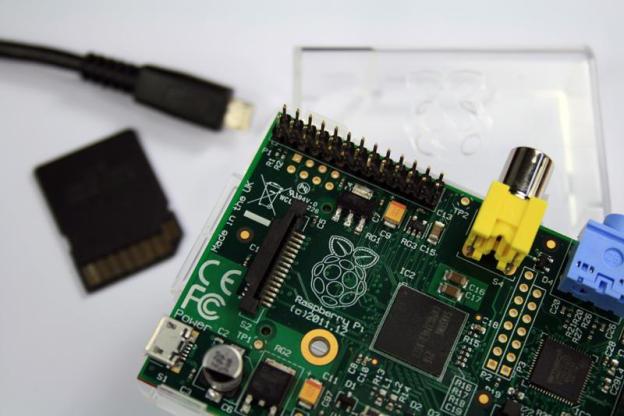
We all have various media files, like photos and movies, stored on our computers and mobile devices that we occasionally want to share with friends and family on a bigger screen, whether it’s a 60-inch high-definition television or a desktop monitor. If you have an Apple TV and Mac products, you can of course use AirPlay to stream your content between devices to your HDTV. But for everyone else – Android, Windows, and even iOS users who use a mix of different platforms – you’re pretty limited. Sure you can buy a little streaming stick like the $100 Plair, but it’s currently limited to beaming whatever site you’re visiting with the Chrome Web browser on your computer. However, if you have a Raspberry Pi single-board computer, you can actually turn the mini-PC into a wireless media center for your home that works with all platforms.
Newark element14, the online store and community for DIYers, is releasing an XBMC bundle for the Raspberry Pi that makes the project doable even for newbies. The star of the kit (as pictured below) is an SD card preloaded with the Raspbmc operating system, a Linux-friendly version of the open source media center software for the Pi (based on Debian), created by 19-year-old wunderkind Sam Nazarko. You’ll also get a USB-powered wireless mini keyboard with touchpad as a remote control, an HDMI cable to connect your Pi to a screen with an HDMI socket, and an Ethernet cable for the initial setup. (Note: This bundle does not include the Raspberry Pi, so you’ll have to buy it separately.)
According to its online tutorial, all you have to do is hook your Pi up to your network via Ethernet (at least for the first time; you can use Wi-Fi to connect to the Internet after), plug in the SD card, and you’ll navigate the graphical XBMC interface without reading any code. Just use the included keyboard as a controller. From here, you’ll be able to access files on any device currently connected to the same network, whether they’re pictures, videos, music, programs, or other content. You can even side-load the files through a USB stick, and download the files via FTP.
Because Raspbmc works with Apple’s AirPlay and AirTunes standards and can understand most file formats, your Raspberry Pi media center can communicate with a broad mix of Wi-Fi devices from iPod Touches to your Windows 8-running computer. Don’t worry that the little bare-bones-looking media streamer will make your high-definition content look pixelated: it even supports 1080p playback on any full HD display so your movies and games should look just fine.
The Raspberry Pi XBMC bundle retails for $70, while the SD card with the Raspbmc software can be had for just $12.71. Both the XBMC kit and SD card are available from Newark element14 or MCM Electronics today.
What would you want to make your Pi-powered media center do?



